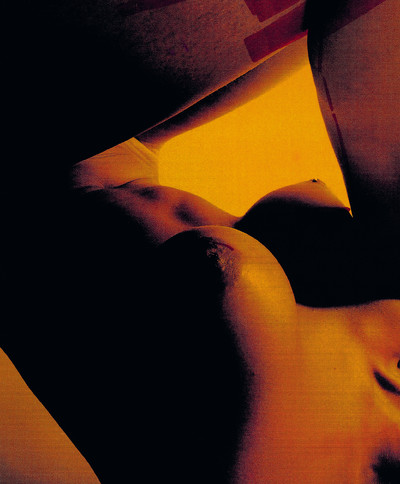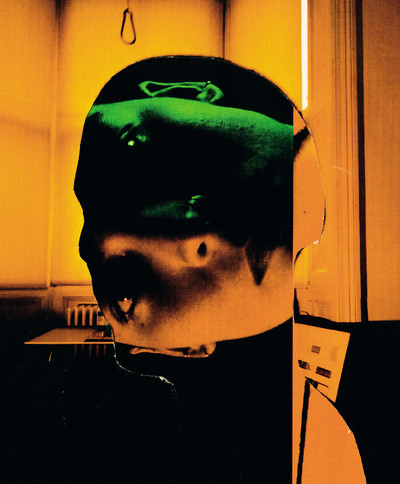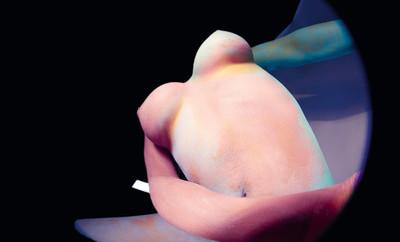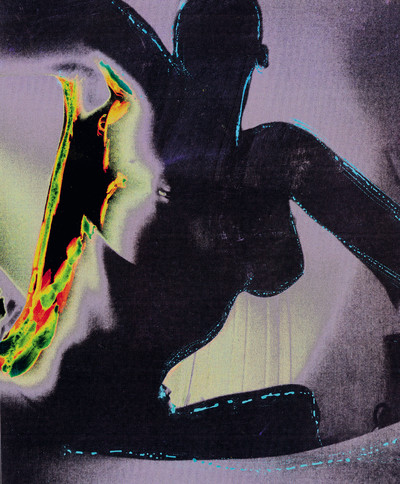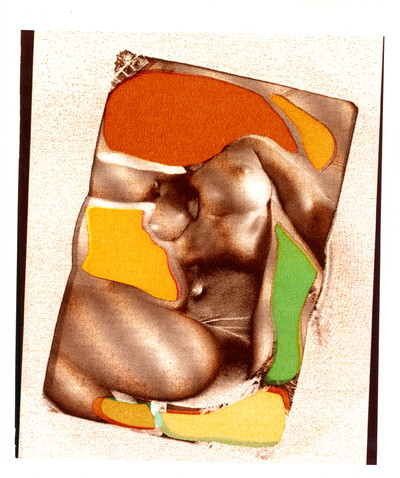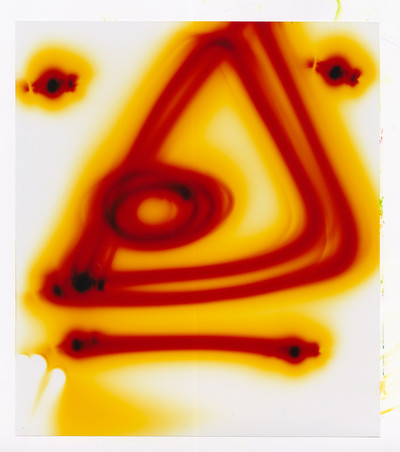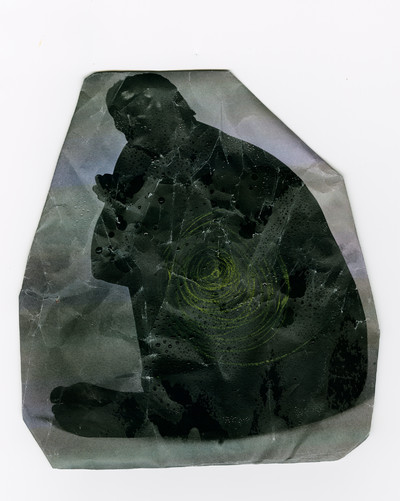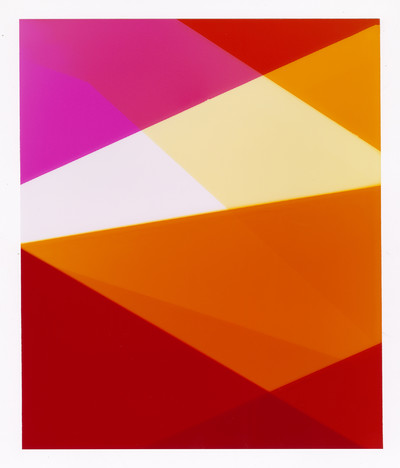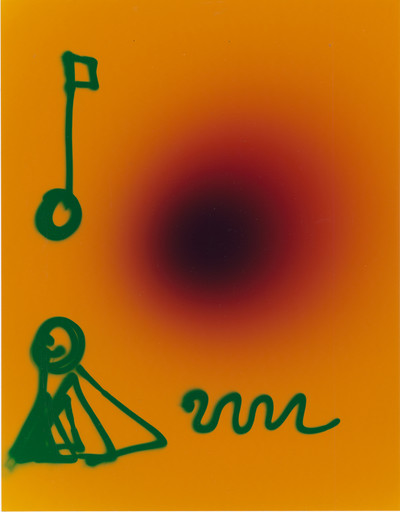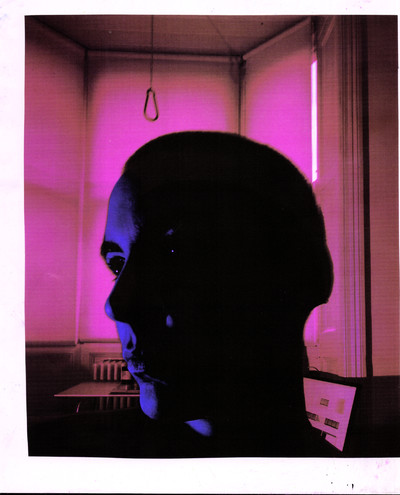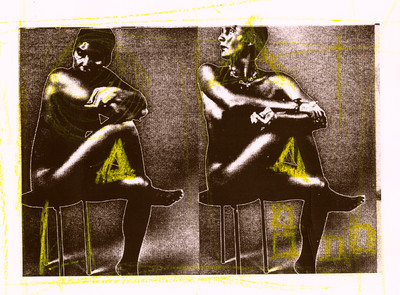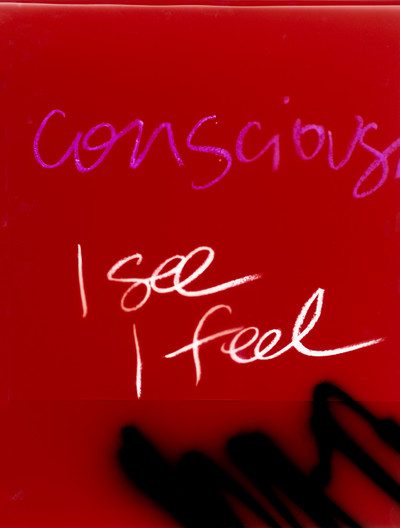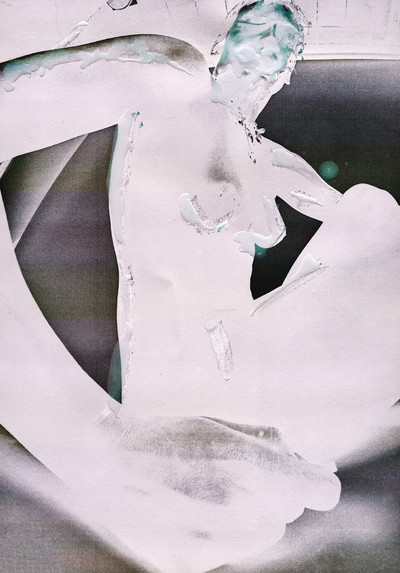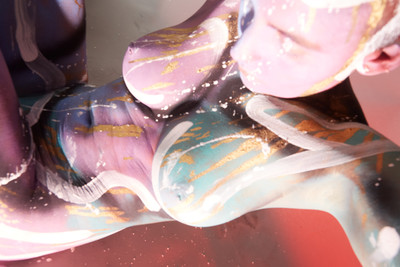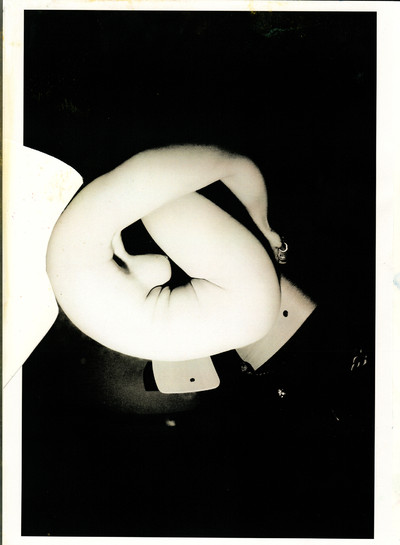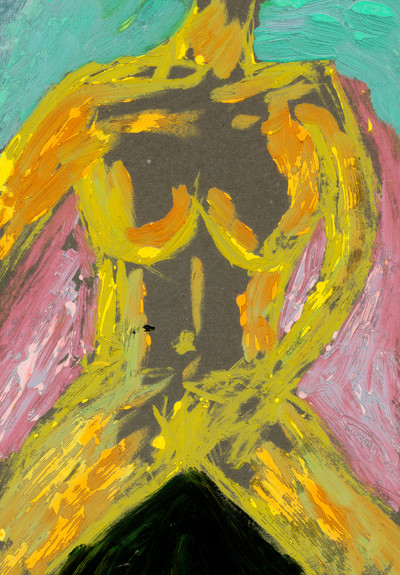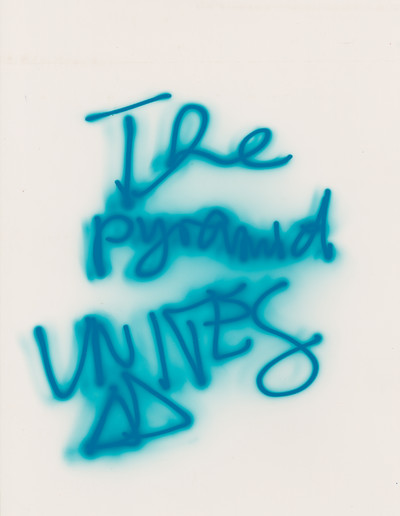The artist and photographer explores all the colours of her body in her debut book.
By Rahim Attarzadeh
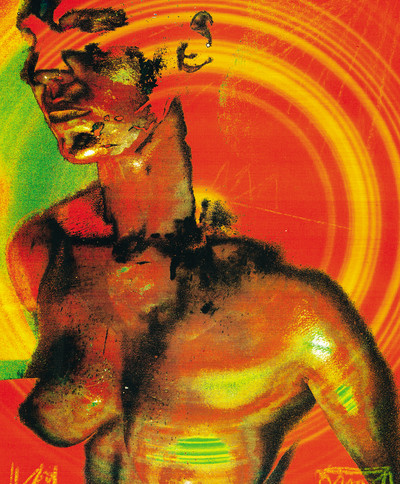
The artist and photographer explores all the colours of her body in her debut book.
Within a glimpse at just one of photographer, artist and all-round multifaceted practitioner Lea Colombo’s images, her relationship with colour, the human form and emotion becomes immediately apparent. Following up from her first solo show last year under the same name, Colombo’s book Colours of My Body continues to present a thought-provoking exploration of her fememine self, all of which she came to terms with during her time in lockdown. ‘That period of time allowed me to challenge myself and push ideas further,’ Colombo tells System. ‘It’s been an inward journey for me because I’ve never put myself in front of the camera. If you had asked me to do that before, I would immediately laugh it off.’
One may be more familiar with Colombo’s body of work when she is the one behind the lens. Her photography style in using a darkroom to create a colour-contrast effect, collaging contour with a sense of optimistic exuberance has been warmly welcomed by publications such as Dazed, i-D and Vogue as well as Marni, Versace and Louis Vuitton.
Such opportunities have only deepened Colombo’s visceral desire to transition her photographic identity into an entirely personal art project. ‘That need to develop my artistic identity keeps me in check. I can’t function without development and the fear that comes with putting myself in a box,’ Colombo explains. Self-published under her namesake studio, Casa Colombo, the book introspects her relationship with what she calls ‘the immediacy of emotion.’ For Colombo, her printed composition showing her body as a canvas to unremittingly combine painting, wax crayon drawing, interweaving dark room prints and a synergy of chiaroscuro and chakra have positioned her in constant discourse with colour, light and sentiment.
Here, System speaks to Colombo about why colour is the ultimate healer, the power of solitude and not allowing fear to hinder her artistic freedom.
When did you decide to put Colours of My Body together?
Lea Colombo: It’s taken quite a bit of time to put together. I’ve allowed the planning process to happen again and again until I ended up in a confident place. I don’t want to bring up the word “lockdown” too much as we’ve all spoken about it again and again but it really happened during that time. That’s when I started working on the book and the imagery. I needed that time and intimacy with myself. It was when I was able to delve deeper creatively and channel all these visions and dreams I’d been having. More dreams than visions.
So, in a way, you were grateful for that moment in time?
Lea Colombo: I was able to have a very open dialogue with myself and the energy I had, which turned into creativity. We live such busy lives and we’re always distracted. We never have that moment with ourselves. Where we are just acting within that allowance. I see it as a beautiful blessing. That period of time allowed me to challenge myself and push ideas further. It’s been an inward journey for me because I’ve never put myself in front of the camera. If you’d have asked me to do that before, I would immediately laugh it off.
‘We’re constantly surrounding ourselves with negativity but we should just accept things and allow ourselves to evolve. That’s the real challenge – acceptance.’
With the focus being on you, as opposed to whom you’ve captured behind your lens, how has that challenged the way you view yourself?
Lea Colombo: It’s definitely challenged how I see myself but in a beautiful way. It’s challenged me to accept who I am and to love myself. More deeply and more profoundly. We’re so quick to judge ourselves, often too harshly. We’re constantly surrounding ourselves with negativity but we should just accept things and allow ourselves to evolve. That’s the real challenge – acceptance.
Did the process of acceptance occur before you used your body as a canvas of self-expression? Was it a combination-effect? Acceptance needed to happen to catalyse the work?
Lea Colombo: Definitely! Using my body as a canvas was a result of that process of acceptance. That led to playing with shape and form and how I view myself through my work. Ironically, I still don’t even see myself in the work. I just look at what I’ve done as a form of creative energy. It was certainly a challenge, going through each layer whilst coming to terms with myself. It’s an ongoing process.
When did your relationship with colour begin and how has the book evolved this?
Lea Colombo: I’ve always been interested in different textures and different ways of exploring colour. As a kid, I was drawn to colour. I would wear colour from head to toe. Then I started working around fashion photography, especially backstage on the shows and it just accumulated more extensively. It came to life when I had my first experience in a dark room. I was allowed to play with colour and create energy from that. For me, colour and energy are permanently interconnected. Being in a darkroom sparked an interest in showing a more raw side to my work. It added another dimension to my work which I have been developing ever since. When I started doing bigger commercial jobs, brands would often say: “Oh my god, what is she doing?” I didn’t really pay attention to any of that. I stuck to my vision and trusted in myself. It’s become my signature ever since and now people have started to resonate with that more positively. The book has built on that resonance.
How do you see the connection between colour, form and emotion? Is that something you consciously wanted to develop within the book?
Lea Colombo: We all have a human energy system that’s based on colour and the different emotions connected to those energy centres. The beauty of colour is how powerful a healer it can be for all those different emotions and moments in life. That connection you’re referring to has something to do with the immediacy of emotion in relation to colour and form. It’s how you feel when you are immediately struck by colour that engages with your senses. There’s a power in realising that and acting on the impulses created from such interactions. That interaction reveals the depth we are able to experience as humans and the images I created in the book are a result of my own interactions.
‘When I started doing bigger commercial jobs, brands would often say: ‘Oh my god, what is she doing?’ I didn’t really pay attention to any of that.’
How does your process of working around colour and pattern differ for commercial projects and collaborations as opposed to the book? When you’ve got more than your own point of view to consider. Yet your approach seems very personal and nuanced. How do you balance that?
Lea Colombo: When taking on a project I always consider the emotion and energy behind the message that needs to be communicated. It’s all intuitive. That leads to my subconscious understanding of how colour, texture and pattern should be applied. It’s using my own emotional connection with colour to understand the emotions of others. I just directed a campaign for the New York City Ballet and it had everything to do with emotion. All the dancers go through different energy centres of their bodies. So we curated each setting based on each emotion and energy centre. That led to how I used colour for the project. I like to think that I choreograph colour through emotion. Nothing I do is based on research. Again, it’s all intuitive which is why I want people to pick up on those consistencies within my work.
Speaking of consistencies within your work, can we expect a second book anytime soon? As Colours of My Body is centred around your solo show last year under the same name and you’ve just put together a sophomore show called A Downwards Evolution, will we see this transition into a second book?
Lea Colombo: Oh, I hadn’t thought about that! You’ll see a second book but whether it will be under the same name remains in question. That’s an interesting connection. You’ve just given me an idea.
Why a downwards evolution? If evolution equates progression, does downwards hinder such growth?
Lea Colombo: Not at all. Negativity is never something I want to emanate through my work. It’s linked to the energy of creation. That evolves downwards, not upwards. Within my body of work for the show, the process evolved downwards from a higher source. A Downwards Evolution was created out of a desire to listen to instinct and to question ourselves as we are too often too distracted. It’s a result of what happens when you take a break to consider yourself as an artist.
‘I like to think that I choreograph colour through emotion. Nothing I do is based on research.’
You’ve spoken about your connection with emotion, energy and colour. With your solo work now growing consistently, do you see a juxtaposition between viewing yourself as an artist, as opposed to a photographer?
Lea Colombo: I think there is a juxtaposition between how I view myself and how the client views me. A lot of the time, they just see me as a photographer and I have to remind myself not to let the feeling of restraint get the better of me. We are allowed to open ourselves up and pursue whatever we want, therefore terminology shouldn’t hinder progress. Photography is obviously how my journey started and it’s still ongoing but I want to be able to add other elements and layers to my creative practice. That need to develop my artistic identity keeps me in check. I can’t function without development and the fear that comes with putting myself in a box. Striving for development prevents progression if we look at things singularly. Wanting to develop as an artist makes me move and get out there. No one can stop your own development apart from yourself.
